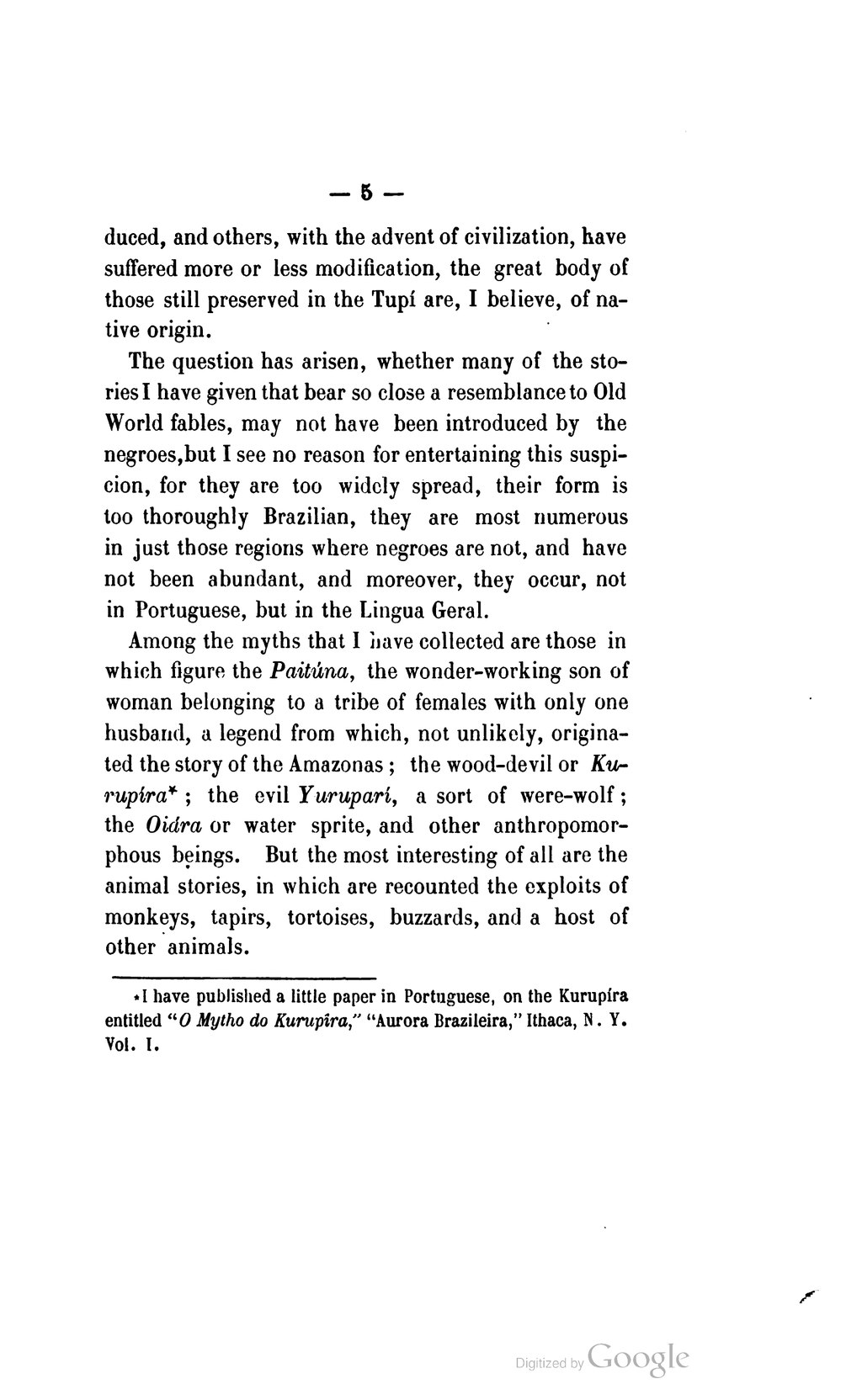— 5 —
duced, and others, with the advent of civilization, have suffered more or less modification, the great body of those still preserved in the Tupí are, I believe, of native origin.
The question has arisen, whether many of the stories I have given that bear so close a resemblance to Old World fables, may not have been introduced by the negroes, but I see no reason for entertaining this suspicion, for they are too widely spread, their form is too thoroughly Brazilian, they are most numerous in just those regions where negroes are not, and have not been abundant, and moreover, they occur, not in Portuguese, but in the Lingua Geral.
Among the myths that I Lave collected are those in which figure the Paitúna, the wonder-working son of woman belonging to a tribe of females with only one husband, a legend from which, not unlikely, originated the story of the Amazonas; the wood-devil or Kurupira[1]; the evil Yurupari, a sort of were-wolf; the Oidra or water sprite, and other anthropomorphous beings. But the most interesting of all are the animal stories, in which are recounted the exploits of monkeys, tapirs, tortoises, buzzards, and a host of other animals.
- ↑ I have published a little paper in Portuguese, on the Kurupira entitled "O Mytho do Kurupira," "Aurora Brazileira," Ithaca, N. Y. Vol. I.

